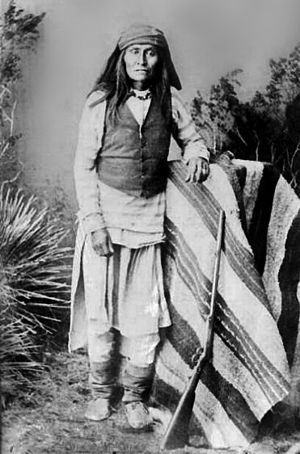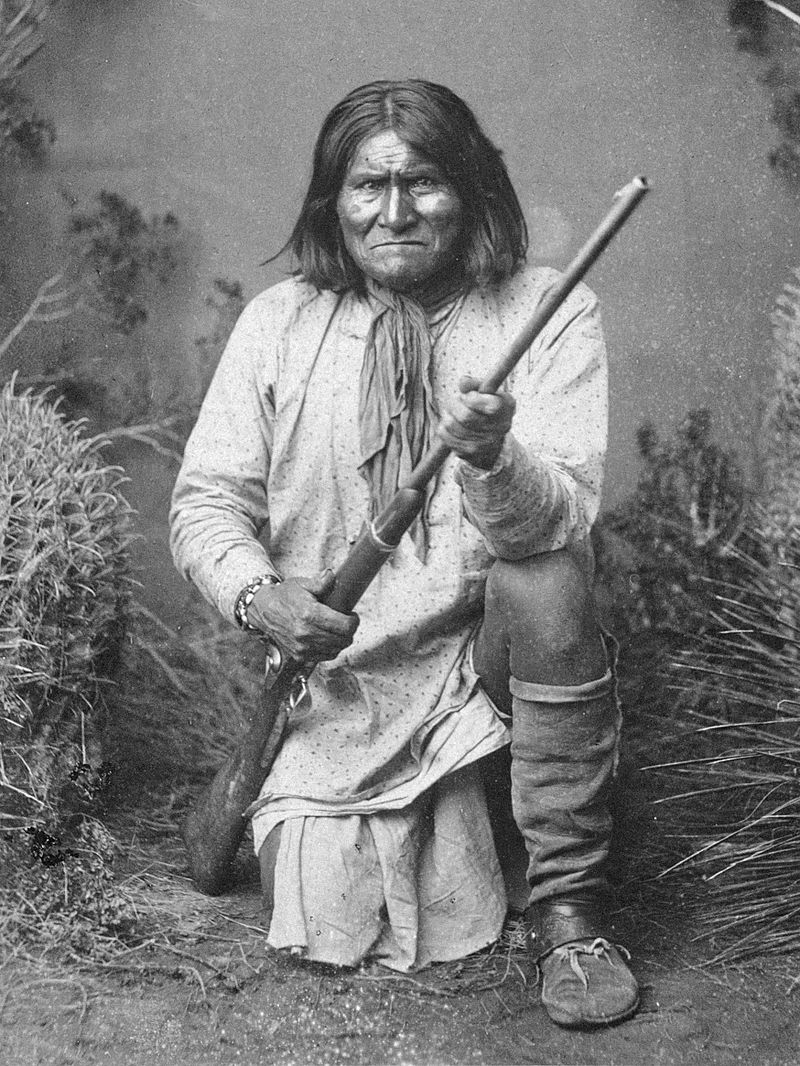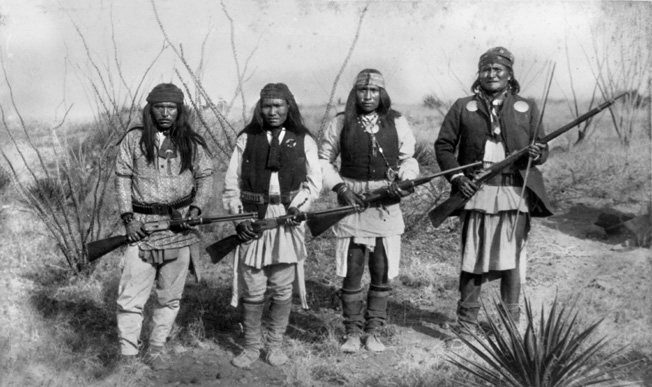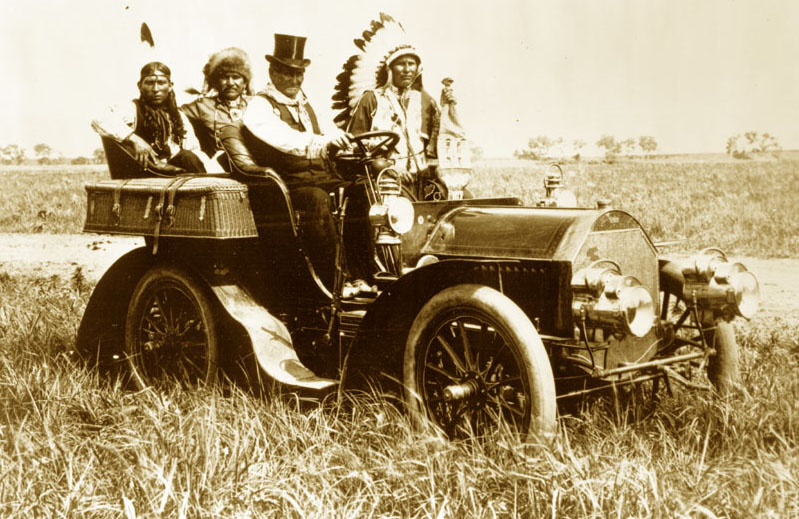"George Hearst (September 3, 1820 – February 28, 1891) was an American businessman, miner, and politician. After growing up on a small farm in Missouri, he founded many mining operations, and is known for developing and expanding the Homestake Mine in the late 1870s in the Black Hills of South Dakota. In 1879 he listed it on the New York Stock Exchange, and went on to other pursuits. The mine operated continuously, producing gold until 2001.
_________
"In physical geography and geology, a horst is a raised fault block bounded by normal faults.[1] A horst is a raised block of the Earth's crust that has lifted, or has remained stationary, while the land on either side (graben) has subsided.[2] The word Horst in Dutch and German means heap – cognate with English "hurst".-----edited and improved, Forest Bloodgood, Wikipedia
After settling in San Francisco in the early 1860s, Hearst became a politician, first representing San Francisco in the state legislature for one term. He also maintained mining interests through his company.
Hearst was appointed as a United States Senator in 1886 to fill a vacancy and was elected as a Democrat later that year on his own account. He served in the Senate from 1887 to his death in 1891.
His only child from his late marriage (at age 40) was his son William Randolph Hearst, who became internationally known as a newspaperman and publisher."
He had interests in the Comstock Lode and the Ophir mine in Nevada, the Ontario silver mine in Utah, the Pacific mine in Pinos Altos, New Mexico,[14] the Homestake gold mine in South Dakota, and the Anaconda Copper Mine in Montana."
____________
"Pinos Altos is a census-designated place in Grant County, New Mexico. The community was a mining town, formed in 1860 following the discovery of gold in the nearby Pinos Altos Mountains. The town site is located about five to ten miles north of the present day Silver City, New Mexico. Although once abandoned, the town is now a place for summer homes and caters to tourists. Its population was 198 as of the 2010 census.
Originally named Birchville, after prospector and former outlaw, Robert H. Birch, one of three people who found the first gold, it later took the Spanish name Pinos Altos, meaning tall pines, because there were tall trees growing in the area. These were cut down as the town grew to a population of about 9,000 during the 1880s and 1890s before slowly being abandoned during the early 1900s. Today, many of the original buildings remain.
From the discovery of gold in 1860 until late 1861, miners were harassed by Apache Indians opposed to American and Mexican settlers occupying their lands. On September 27, 1861, it was the site of the Battle of Pinos Altos between the Arizona Guards of Pinos Altos, a Confederate Arizona Territorial militia company, and Apache warriors led by Mangas Coloradas and Cochise.
This battle did not end the conflict between settlers and Native Americans, which continued for several years, with neither side particularly willing to see the dispute resolved peacefully.
Even when a treaty was eventually negotiated between the settlers and Indians, a settler hosting a dinner to celebrate the signing opened fire on 60 unarmed Indians, killing and injuring many of those assembled."
"Senator George Hearst invested in several Pinos Altos mines, including the Mina Grande and the Pacific Mine. He built a stamp mill in Pinos Altos in 1889, and incorporated the Silver City, Pinos Altos and Mogollon Railroad to connect these properties to his Silver City smelter."
https://en.wikipedia.org/wiki/Silver_City,_Pinos_Altos_and_Mogollon_Railroad

"Mangas Coloradas or Mangus-Colorado (La-choy Ko-kun-noste, alias "Red Sleeve"), or Dasoda-hae ("He Just Sits There") (c. 1793 – January 18, 1863) was an Apache tribal chief and a member of the Mimbreño (Tchihende) division of the Central Apaches, whose homeland stretched west from the Rio Grande to include most of what is present-day southwestern New Mexico. He was the father-in-law of the Chiricahua (Tsokanende) Chief Cochise, the Mimbreño Chief Victorio and the Mescalero (Sehende) Chief Kutu-hala or Kutbhalla (probably to be identified with Caballero), and is regarded by historians to be one of the most important Native American leaders of the 19th century due to his fighting achievements against the Mexicans and Americans.
The name Mangas Coloradas is the reception of his Apache nickname Kan-da-zis Tlishishen ("Red Shirt" or "Pink Shirt") by the Mexicans and is Spanish for Red Sleeves. A Bedonkohe (Bi-dan-ku – 'In Front of the End People', Bi-da-a-naka-enda – 'Standing in front of the enemy') by birth he married into the Copper Mines local group of the Tchihende and became the principal chief of the whole Tchihende Apache division, including the neighboring Mimbreño local group of the Warm Springs Tchihende, directly led by the famous chief Cuchillo Negro (in Apache language Baishan), second chief of the whole Tchihende Apache division and his long-time companion."

https://en.wikipedia.org/wiki/Mangas_Coloradas
"n the summer of 1862, after recovering from a bullet wound in the chest, Mangas Coloradas met with an intermediary to call for peace. In January 1863, he decided to meet with U.S. military leaders at Fort McLane (Apache Tejo), in southwestern New Mexico. He was promised provisions in return for peace, but the white people didn't want to have peace with them.[2] Mangas arrived under a flag of truce to meet with Brigadier General Joseph Rodman West, an officer of the California militia and a future Reconstruction senator from Louisiana. Armed soldiers took Mangas into custody. West gave an execution order to the sentries."
"Men, that old murderer has got away from every soldier command and has left a trail of blood for 500 miles on the old stage line. I want him dead tomorrow morning. Do you understand? I want him dead.
"That night, Mangas was tortured, shot and killed under the pretext of a supposed escape attempt. While tied on the ground, Mangas was provoked with red hot bayonets until he moved to simulate his attempt to "escape".[3]
The following day, U.S. soldiers, fascinated by the size of the Apache (Mangas was 6 feet, 6 inches tall), cut off his head, boiled it and sent the skull to Orson Squire Fowler, a phrenologist in New York City. Phrenological analysis of the skull and two sketches of it appear in Fowler's book.[4] Daklugie, one of informants in Eve Ball's book,[5] said the skull went to the Smithsonian Institution.
However, the Smithsonian has done a thorough search for the skull, and reports that it never received it. Mangas' descendants and sources based on their testimony may have confused the Smithsonian with Fowler's Phrenological Cabinet in New York, where the skull was on display, leading to the misattribution. Another possible fate of the skull was that it was returned to the Apaches by the Smithsonian in a 1990 transfer, but was not individually labeled.[6]
The murder and mutilation of Mangas' body only increased the hostility between Apaches and the United States, resulting in war continuing for nearly another 25 years."
__________
"Cochise (/koʊˈtʃiːs/; in Apache: Shi-ka-She or A-da-tli-chi – "having the quality or strength of an oak", after the whites called him "Cochise", the Apache adopted it as K'uu-ch'ish or Cheis "oak"; c. 1805 – June 8, 1874) was leader of the Chihuicahui local group of the Chokonen ("central" or "real" Chiricahua) and principal chief (or nantan) of the Chokonen band of the Chiricahua Apache. A key war leader during the Apache Wars, he led an uprising against the U.S. government which began in 1861, and persisted until a peace treaty in 1872."
"
The best-selling novel by Elliott Arnold in 1947 titled Blood Brother gives a fictionalized account of the latter part of the struggle and friendship between Jeffords and Cochise.[18]
In 1950, director Delmer Daves turned Arnold's novel into a film re-titled Broken Arrow, featuring James Stewart as Jeffords and Jeff Chandler as Cochise.
Broken Arrow is often credited as the first sound film to show a sympathetic picture of Native Americans and influenced the popular image of Native American people. The tall, handsome, deeply tanned Chandler, a Jewish actor born in Brooklyn, New York, portrayed Cochise as a noble, nearly tragic character forced to fight against the U.S. Army officers who led incursions into Apache territory.[18]
John Ford's representation of Cochise in the 1948 film Fort Apache was also positive to Native Americans, although in that film Cochise spoke Spanish (a language the Apaches had learned from their Mexican enemies).[19] Jeff Chandler again portrayed Cochise in the 1952 film The Battle at Apache Pass.[20] Chandler also played Cochise in Taza, Son of Cochise (1954), with Rock Hudson as his son, Taza[20] The film Conquest of Cochise released by Columbia Pictures in 1953 and starring John Hodiak as Cochise also showed Cochise as a caring man who wanted peace with whites.[21]
Broken Arrow was a TV Western series that told a fictionalized account of the historical relationship between Jeffords (John Lupton) and Cochise (Michael Ansara); the show was aired on ABC in prime time from 1956 through 1958.[22] Cochise was portrayed by Jeff Morrow in a 1961 episode of Bonanza.[23]
"Cochise" is an instrumental piece in the album "Guitars", by Mike Oldfield.
Audioslave's debut single "Cochise" is named after the chief. In an interview, guitarist Tom Morello said that Cochise was "the last great American Indian chief to die free and absolutely unconquered. When several members of his family were captured, tortured and hanged by the U.S. Cavalry, Cochise declared war on the entire Southwest.... Cochise the avenger, fearless and resolute, attacked everything in his path with an unbridled fury."[24]
The 2008 novel by Melody Groves titled Arizona War: A Colton Brothers Saga gives a fictionalized account of Cochise's dealings with the main characters, James and Trace Colton, during the early 1860s including the Bascom Affair of 1861 and the New Mexico-bound force of California volunteers under General James Henry Carleton during 1862.[25]
Wes Studi portrays Cochise in A Million Ways to Die in the West despite the film being set in 1882, eight years after Cochise's death.[26]
A statue of Cochise is shown as a meeting point between friends Jaime Reyes and Tye Longshadow in the Young Justice episode "Beneath."
A small lunar crater was named after Cochise, located near the landing site in the Taurus–Littrow valley, by the astronauts of Apollo 17.[27]
"
Phoenix-area theme park, Legend City (now defunct), featured a popular animatronic river ride called Cochise's Stronghold"
https://en.wikipedia.org/wiki/Cochise
"Cochise evaded capture and continued his raids against white settlements and travelers until 1872. In 1871, General Oliver O. Howard was ordered to find Cochise, and in 1872, Howard was accompanied by his aide 1st Lt Joseph Alton Sladen and Captain Samuel S. Sumner, and they came to Arizona to negotiate a peace treaty with Cochise.
Tom Jeffords, the Apache leader's only white friend, was also present and a treaty was successfully negotiated on October 12, 1872. Based on statements by Sumner and descriptions by Sladen, modern historians such as Robert M. Utley believe that Cochise's Spanish interpreter was Geronimo"
https://en.wikipedia.org/wiki/Geronimo
" Apache people stood in awe of Geronimo's "powers" which he demonstrated to them on a series of occasions. These powers indicated to other Apaches that Geronimo had super-natural gifts that he could use for good or ill.
In eyewitness accounts by other Apaches, Geronimo was able to become aware of distant events as they happened,[14] and he was able to anticipate events that were in the future.[15] He also demonstrated powers to heal other Apaches"




"Photo by C. S. Fly of Geronimo and his warriors, taken before the surrender to Gen. Crook, March 27, 1886, in the Sierra Madre mountains of Mexico. Fly's photographs are the only known images of Indian combatants still in the field who had not yet surrendered to the United States"
"Geronimo in a 1905 Locomobile Model C, taken at the Miller brothers' 101 Ranch located southwest of Ponca City, Oklahoma, June 11, 1905"
"After the fair, Pawnee Bill’s Wild West Show brokered an agreement with the government to have Geronimo join the show, again under Army guard. The Indians in Pawnee Bill’s show were depicted as "lying, thieving, treacherous, murderous" monsters who had killed hundreds of men, women and children and would think nothing of taking a scalp from any member of the audience, given the chance."
"Visitors came to see how the "savage" had been "tamed," and they paid Geronimo to take a button from the coat of the vicious Apache "chief." (Geronimo was not a chief.) The shows put a good deal of money in his pockets and allowed him to travel, though never without government guards"
"Through an interpreter, Roosevelt told Geronimo that the Indian had a "bad heart." "You killed many of my people; you burned villages…and were not good Indians."
"Geronimo's ninth and last wife was Azul.[76]
The great-great-grandson of Geronimo, Harlyn Geronimo teaches Apache language lessons at Mescalero Apache Reservation as of 2019.[77]
Death
In February 1909, Geronimo was thrown from his horse while riding home, and had to lie in the cold all night until a friend found him extremely ill.[37] He died of pneumonia on February 17, 1909, as a prisoner of the United States at Fort Sill, Oklahoma.[78] On his deathbed, he confessed to his nephew that he regretted his decision to surrender.[37]
His last words were reported to be said to his nephew, "I should have never surrendered. I should have fought until I was the last man alive."
__________
"Six members of the Yale secret society Skull and Bones, including Prescott Bush, served as Army volunteers at Fort Sill during World War "
___________
"In 2009, Ramsey Clark filed a lawsuit on behalf of people claiming descent from Geronimo, against several parties, including Robert Gates and Skull and Bones, asking for the return of Geronimo's bones.[82] An article in The New York Times states that Clark "acknowledged he had no hard proof that the story was true."[86] Investigators, including Bush family biographer Kitty Kelley and the pseudonymous Cecil Adams, say the story is untrue"
[The use of "Geronimo" in the raid that killed Bin Laden] either was an outrageous insult [or] mistake. And it is clear from the military records released that the name Geronimo was used at times by military personnel involved for both the military operation and for Osama Bin Laden himself."

"1971: Elton John's song "Indian Sunset" features a lyric by Bernie Taupin that erroneously suggests Geronimo was gunned down by the United States Cavalry while in the act of surrendering.
1972: Michael Martin Murphey's song "Geronimo's Cadillac" was inspired by Walter Ferguson's photo of Geronimo sitting in a luxury Locomobile. The song hit number 37 on the Billboard Hot 100, and it was later covered by Cher and Hoyt Axton. The German duo"
https://en.wikipedia.org/wiki/Geronimo
_________
https://www.findagrave.com/memorial/66970277/freeman-bloodgood
"7/22/1925 "Stamford Mirror Recorder", Stamford, NY
Word has been received by relatives of Mr. Freeman Bloodgood of his death, at State College, New Mexico, on June 30th, at the age of 92. Mr. Bloodgood and wife before leaving for the west lived at Conesville.
With his family they arrived in New Mexico in 1881, before there were any railroads and entered the teaming business, hauling freight between Las Vegas and White Oaks.
He also hauled the first load of ore out of Kingston when that was a boom mining camp. The ore was hauled to Nut Station, which was the big railroad point at that time before Dealing was founded.
At Kingston he was a crony of Doheny, the big oil man who was a miner at that time, and many others of the old timers. He later went to ranching in the Mogollones, but was run out by the Indians and then went into the cattle business near Kingston.
He was born in New York state. About four years ago he fell and since that time had been in poor health and had been making his home with his son. Dean Bloodgood, at State College. He leaves besides his wife, Ophelia A., two sons, Dean, of State College and Ellsworth, of Kingston, New Mexico.
Interment was made in the Masonic cemetery at Las Cruces. He was a brother-in-law of Weidman Shoemaker, of Middleburgh; his wife, Ophelia, being eldest daughter of Abram Shoemaker, at one time a resident of Conesvllle, at that time called Stone Bridge. Dr. G. B. Shoemaker of Cobleskill is a nephew."
https://en.wikipedia.org/wiki/Kingston,_New_Mexico
"Following prospecting developments in Hillsboro to the east, silver was discovered in the district in 1880, and extensive mining efforts commenced in 1883.
From 1883 to 1893, almost 6,000,000 ounces of silver were produced from 27 mines.
From 1934 to 1957, 67,940 ounces of silver were produced, plus 124 ounces of gold. Base metal ores were produced from 1930 to 1949.[5]
The Iron King, Empire, and Brush Heap were some of the first mines in the area. Most production was within 460 feet of the surface in the supergene zone. "
"The Lady Franklin Mine was the largest producer of high-grade silver from 1880 to 1893, averaging 15 ounces per ton.
Notable Resident
Edward L. Doheny Upton Sinclair's There Will Be Blood/Good
________
"On the site of a former Apache camp, nestled in the knees of the Black Range in southwestern New Mexico, Kingston (elevation 6,224 feet) lies astride Middle Percha Creek. Originally called Percha City, the town boomed in 1882 after a silver strike by miner Jack Sheddon.
The first officially recognized habitation in town was a tent store set up in June 1882. A rough-hewn tent and board city soon busted out along the creek. Within two months some 2,000 people were buying lots for $15 in the newly platted town site. By 1883 Main Street lots sold for $500, while lots near the diggings fetched up to $5,000.
The largest mine, the Iron King (for which Kingston is named), soon had competition from the Solitaire, Empire, Calamity Jane, Miner’s Dream, Black Colt, Brush Heap, Bonanza, Gypsy, Ironclad, Caledonia and Little Jimmy. Eventually, 30 mines dotted the hills. By 1885 the population peaked at more than 7,000.
Characters associated with Kingston included New Mexico’s own Billy the Kid, satirist Mark Twain, President Grover Cleveland, Wild Bunch pals Butch Cassidy and the Sundance Kid, Apache leaders Geronimo and Victorio, political boss Albert Fall, badman “Black Jack” Ketchum, cowboy chronicler Eugene Manlove Rhodes and poet-scout John Wallace “Captain Jack” Crawford.
The town’s ethnic mix and early character are reflected in such place names as Italian Avenue, Chinese Gardens and Virtue Street (the latter home to Sadie Orchard, the town’s leading madam).
Among the wildest Western mining towns, Kingston sported 22 saloons with gambling halls for roulette and faro, 14 grocery and general stores, a brewery, three newspapers, several restaurants (one served oysters), three hotels, several boardinghouses, two assay offices, two fraternal lodges, a bank, numerous gambling dens, a drugstore, a dancing school, a tennis court, an icehouse, seven sawmills, a theater (once graced by actress Lillian Russell), a school, a smelter, a kiln, a blacksmith, a dentist and two doctors. Madam Orchard reportedly passed the hat (or perhaps a stocking) to have a church built.
The gold standard replaced the silver standard in 1892, dropping silver prices 90 percent almost overnight and sparking the Panic of 1893. As the mines played out and profits turned into losses, Kingston folded. Many folks moved to Arizona Territory or simply shifted to neighboring Hillsboro, whose economy was based on gold mining and ranching.
As townspeople left, they tore down the wooden buildings and carried out the lumber to build new homes.
In 1893 they burned many of the remaining buildings to recover the square handmade nails. Little was left standing of what was once New Mexico’s largest town.
The Percha Bank, onetime repository for $7 million in silver, remains intact and serves as a museum.
The original vault (an 1885 Diebold) occupies a brick room within the bank’s 2- foot-thick stone and Kingston brick walls. The design was brilliant—even if a thief broke through the outside walls, he couldn’t access the vault. Apparently it worked, as no one ever broke in to or robbed the bank.
A former assay office now serves as a residence, as does the Victorio Hotel, named for the Apache upon whose hunting grounds Kingston sits. Across the street is the Black Range Lodge [www.blackrangelodge.com], a beautifully restored bed-and-breakfast. Its plastered brick walls date back to an 1880s boardinghouse that lodged both miners and troopers of the 8th Cavalry.
The cemetery occupies a hill overlooking Kingston. Still in use today, it chronicles the lives and deaths of merchants and unlucky miners, immigrants, soldiers and a war hero.
When visitors arrive in search of treasure or artifacts, says local historian Mark Nero, there is no need to go to the landfill, as people “dig up all sorts of stuff” right in town. Bottles, cavalry buttons, leather and other relics turn up regularly.
Still meeting once a month in the old schoolhouse is the Spit & Whittle Club, dating from 1888, which bills itself as one of the nation’s oldest continuously active social clubs.
Talk of religion or politics is prohibited—as is spitting and whittling.
****Townswomen halted those activities when first allowed to join."
***Prudence Crandall, Freeman Bloodgood Ophelia Bloodgood , Ellsworth Bloodgood, Elk City Kansas

No comments:
Post a Comment